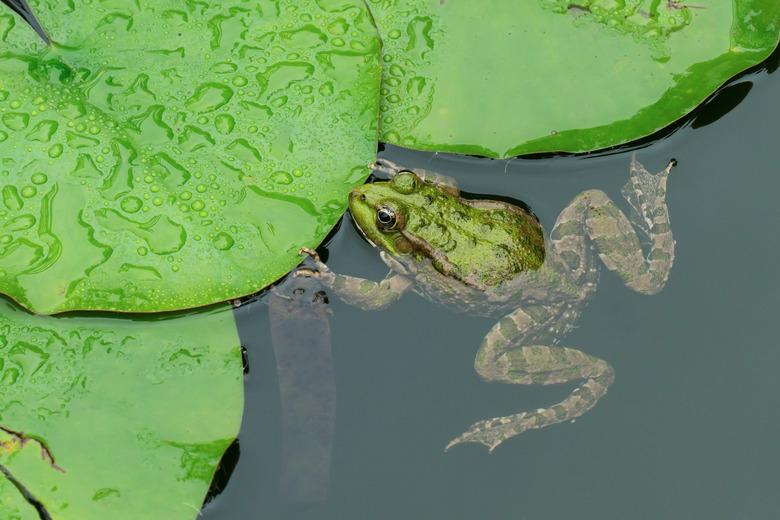Are Frogs In The Garden Dangerous?
Most of the frog species in North America are perfectly safe, with a few notable exceptions. Because they eat insects, including mosquitoes and ticks, many people lure frogs to their gardens intentionally, while others simply take a live and let live approach. Frogs can become a nuisance, however, if large numbers of them gather and loudly sing the song of their people under your bedroom window at night. In that case, you may want to find some humane ways to encourage your frogs to leave the property.
Tip
Most of the time, having frogs in your garden is not only safe but beneficial. Frogs are a sign of a healthy ecosystem and can help reduce the insect population in your garden. There are, however, a few frog species to be leery of.
Toxic Frogs and Toads
The good news is that toxic frog species aren't native to the United States. The bad news is that you could still encounter one anyway. Exotic pet owners sometimes tire of their amphibians and release them into the wild. In some places, like Florida, government agencies have attempted to solve agricultural insect problems by releasing toxic toads. (It didn't work, but the project did leave behind an invasive, toxic species.)
In the United States, the two toxic species you're likely to encounter are the cane toad and the Cuban tree frog. Cane toads typically measure about 4 to 6 inches in length. They're tan or red in color but can also be brown or gray. They have dark spots on their backs and secrete a milky white toxin when disturbed. Their toxin won't harm you, but it can make dogs and cats quite ill — sometimes fatally so.
The Cuban tree frog can prove equally dangerous to pets. These small frogs grow only 1.5 to 3 inches long. You can find these frogs in red, green, and brown, and many have irregular dark splotches or stripes. Some have yellow markings in their "armpits" and groin area. Tree frogs also have very enlarged toe pads for climbing trees.
Although the Cuban tree frog and the cane toad can harm pets and not people, there are a few species that can harm both, including the poison dart frog. Fortunately, Mother Nature is fond of advertising poisons with bright colors. It's not likely to happen, but if you do see a vibrantly colored frog, assume it's poisonous and don't disturb it.
Nontoxic Doesn't Mean Safe
When it comes to garden frogs, it's important to remember that even benign, nonpoisonous frogs can cause illness. Known to carry salmonella bacteria, contact with frogs can make people quite ill. Dogs and cats are less susceptible than humans but can be infected.
Signs of salmonella infection include diarrhea, abdominal pain, fever, and vomiting. Symptoms typically appear between one and three days after exposure. If you suspect salmonella, see a doctor promptly for treatment.
Getting Rid of Frogs
Frogs are quite beneficial in the garden, but you may want to avoid them if you have children or pets who could get sick. To discourage them, never leave pet water dishes or other water-collecting devices outside. If you have a swimming pool, make sure that it is properly chlorinated and maintained so that frogs don't see it as a desirable place to lay eggs.
Remove or block off hiding places, like under the porch or in thick shrubs close to your home's foundation. Keep the garden tidy and try to keep it dark at night. Insects are attracted to light, and frogs are attracted to insects. Minimizing the number of insects drawn to your home can minimize the number of frogs that follow.
In the weird but potentially effective category, you can also try sprinkling coffee grounds in areas where you don't want frogs. The theory is that the frog's sensitive feet dislike the acid in the grounds. Whatever removal method you try, know that frogs are most active in the early morning and at night. While you're in the process of eliminating your frogs, always supervise pets and children who are outside at these times of the day.
References
- New York State Department of Health: Salmonella Infection From Frogs, Turtles, and Lizards
- University of Florida IFAS Department of Wildlife Ecology & Conservation: Treefrogs (Family Hylidae)
- USA Today: Florida Tells Residents to Humanely Kill These Invasive, Toxic Toads That Are Lethal to Pets
- University of Florida IFAS Extension: Frogs: The Good, the Bad, and the Ugly
